#teresa cristina of bourbon
Text

Teresa Cristina do Brasil, por Vicente Mallio
4 notes
·
View notes
Note
if ur trans then whats your real name?
Teresa Cristina Maria Josefa Gaspar Baltasar Melchior Januária Rosalía Lúcia Francisca de Assis Isabel Francisca de Pádua Donata Bonosa Andréia de Avelino Rita Liutgarda Gertrude Venância Tadea Spiridione Roca Matilde de Bourbon-Duas Sicílias
#i still use my birth name(Eliza) but you still deserved it anon#trans#nonbinary#im nonbinary#Teresa Cristina de Bourbon-Duas Sicílias
2 notes
·
View notes
Note
I am a bit confused now. Who are the Bourbon girls? I know Maria Chiara. I mean tf in what royal family are they?
hehehe if you think the greeks were bad, let me introduce you to the Bourbon-Two Sicilies aka the most kardashian-esque deposed royals of all time




Prince Carlo, Duke of Castro, one of the two people who claim to be the heads of the House of Bourbon Two-Sicilies, married Camilla Crociani, the daughter of an Italian billionaire and had two daughters: Princess Maria Carolina, Duchess of Calabria, Duchess of Palermo (born 2003) and Princess Maria Chiara, Duchess of Noto, Duchess of Capri (born 2005). Maria Chiara is the one rumored to be dating Prince Christian of Denmark and deemed the future queen of Denmark by the Italian media and these two are who we've been referring to as the 'Bourbon girls'.
Anyway, for more context into the House of Bourbon Two-Sicilies, they are a branch of the Spanish Bourbons that ruled in Southern Italy, specifically Sicily and Naples; when those two kingdoms were joined that's when they became the 'two Sicilies'. Funnily enough, their House only recognizes male progeniture so the succession should go to the other dude who claims to be the head of this DEFUNCT house but apparently Maria Carolina is going to lay her claim whenever her dad goes poof so. I only knew about them growing up because of Princess Teresa Cristina who went on to become Empress of Brazil and because I thought their name looked #cool
and then I saw people in the royalverse clowning on them which is well deserved
OH they also constantly call the paps on themselves and very clearly pay to have articles about them written and their instagram is funnier than Olympia's tiktok account so that should tell you something
25 notes
·
View notes
Text
Our Contestants
1: Maria Leopoldina of Austria, First Empress of Brazil
2 Dona Maria I of Portugal
3: Dona Maria II of Portugal
4: Isabel, Princess Imperial of Brazil
5 Carlota Joaquina de Bourbon
6: João I, Duke of Bragança
7 João IV, King of Portugal
8: Afonso I, Duke of Bragança
9: Fernando I, Duke of Bragança
10: Jaime I, Duke of Bragança
11: Teodósio I, Duke of Bragança
12: Teodósio II, Duke of Bragança
13: Afonso VI of Portugal
14 Pedro II of Portugal
15: João V of Portugal
16: João VI of Portugal
17: Pedro II of Portual
18 Pedro I of Brazil/ IV of Portugal
19: Miguel I of Portugal
20: Pedro V of Portugal
21: Luís I of Portugal
22: Carlos I of Portugal
23: Manuel II of Portugal
24 Dom Pedro II of Brazil
25: Teresa Cristina, Empress of Brazil.
26: Catherine de Bragança, Queen Consort of England, Scotland, and Ireland
27: Infante Dom Manuel, Candidate for the throne of Poland
28: José I of Portugal
29: Carol II of Romania (Carlos II in Portuguese)
30: Ferdinand I of Romania
31: Infantá Antonia de Bragança, Princess Consort of Hohenzollern
32: Amélie of Leuchtenberg
33: Infanta Isabel Maria, Regent of Portugal
34: Mariana Vitória of Spain, Queen Consort of Portugal
35: Maria Francisca of Savoy (Consort to Afonso VI and Pedro II)
36: Maria Pia of Savoy (Queen-Consort to Luís I of Portugal)
6 notes
·
View notes
Note
Chegando com pedido inusitado, mas acho que vcs conseguem me ajudar. Quero fazer um perso da nobreza, mas queria me basear em gente que já existiu, figuras históricas, mas não sei quais são legais, de verdade, podem me ajudar? Dando apenas o nome posso buscar no google, mas é que sou péssima em história e nunca sei quem é legal
O quanto eu amei essa ask não está escrito!! Pompurin, você veio ao lugar certo, porque eu sou o maior dump de história de realeza (ao menos, que eu conheço). Ser legal já tira todo mundo da lista, porque ninguém foi legal, eles podiam ter ações nobres e sociais, mas era por algum interesse mascarado... Nobreza nunca foi simpática, mas as histórias são magnificas. Vou separar alguns nomes para ti. [ meio edit, acho que vai ficar muito extenso, então depois da Rainha Elizabeth II, não coloquei descrições, apenas em alguns específicos. ]
Lady Di, nossa amada Princesa Diana da Inglaterra (1961-1997). Minha amada mais injustiçada, sou a maior apaixonada por tudo que a envolve (já assisti todos os documentários) e ela é um exemplo perfeito de monarca que foi contra as regras da Coroa Britânica.
Kate Middleton (1982). Atual princesa de Gales e esposa do Príncipe William da Inglaterra, além de se mostrar uma mãe exemplar (com semelhanças com sua sogra), também é um exemplo de monarca, porque ela é muito simpática com as pessoas.
Maria Leopoldina da Áustria (1797-1826). Esposa de Dom Pedro I de Portugal-Brasil. Muito importante em muitos momentos do Brasil Império.
Teresa Cristina de Bourbon-Duas Sicília (1822-1889). Imperatriz do Brasil e esposa de Dom Pedro II. Teve uma novela da Globo que mostrou muito dela, uma mãe amorosa e que cuidava de seu império, mas que teve momentos conturbados com o marido lixo.
Pedro II do Brasil (1825-1891). Último imperador do Brasil. Tenho muitos sentimentos controversos sobre o Pedro, todos envolvendo sua gestão e a mulher dele, mas a história dele vai muito além do que aprendemos na escola.
Cleópatra VII Filopator (69 a.C - 30 a.C). Falar da Cleópatra é muito !!!, ela foi uma das poucas mulheres que governaram o Egito (se não a única) e tem muita história, claro que existem as problemáticas, mas ela sempre foi estrategista e sedutora. Até hoje, seu sarcófago não foi localizado, o que indica que tem muito que não sabemos sobre.
Rainha Elizabeth II (1926-2022). Famosa "Betinha" para os brasileiros, tem muito sobre ela que dá raiva, mas ela teve muitos momentos bons na vida e claro, viveu bastante.
Rainha Vitória (1819-1901). Subiu ao trono com apenas 18 anos e tem a chamada Era Vitoriana.
Ana Bolena (1501-1533). Bela e decapitada por mando do marido, responsável pelo corte da relação Igreja X Inglaterra. Aconselho procurar o musical The Six, porque mostra todas as seis esposas do Henrique e como elas são interessantes.
Ricardo I (1157-1199). Ricardo Coração de Leão, tem uma história legal.
Henrique VIII (1491-1547). Um homem que não presta, teve várias esposas e muitas coisas rolaram no mandato dele. Aconselho ver The Tudors.
Catarina de Médici (1519-1589)
Maria Antonieta (1755-1793). Essa mulher... Vivia de luxúria e a frase dos brioches vem dela.
Luís XIV (1638-1715). Rei Sol.
Nefertiti (1370 a. C.-1330 a. C. - estimada). Descrita como a mais bela do mundo.
Mary Stuart (1542-1587)
Catarina II da Rússia (1729-1726). Nunca deixarei a Catarina, a Grande de fora. Outra rainha que admiro demais, apesar dos erros cometidos, ela foi muito sagaz e inteligente em dar um golpe no próprio marido e assumir o trono de Todas as Rússias, mesmo enfrentando grandes problemas. Existem muitos conteúdos sobre ela, mas se quiser rir, aconselho ver a série The Great.
Pedro III da Rússia (1728-1762). Teve um mandato curto porque foi deposto (sofreu O golpe da Catarina), vivia embriagado... Como ele é mostrado em The Great é um pouco demais, talvez, mas tá ali.
Rei George III do Reino Unido (1738-1820). Aquele rei lá de Queen Charlotte, ele tinha uma doença chamada porfiria, mas na época... Bem, só o chamaram de louco mesmo (aquela época era terrível).
Sophie Charlotte de Mecklemburgo-Strelitz (1744-1818). Assim como muitas figuras históricas, ela foi embranquecida, mas Charlotte era filha de portugueses e africanos, mas nasceu na Alemanha e talvez esse seja o motivo... Mas ela foi uma ótima rainha.
São alguns nomes, aqueles que lembrei para pesquisar, mas se pesquisar sobre os monarcas da Europa, com toda a certeza, vai encontrar uma infinidade! Podia falar outros, mas a Joy disse que ia ficar muita informação e ela está certa, acho que se pesquisar por esses já vai encontrar novos nomes que podem ajudar.

8 notes
·
View notes
Note
"well, Brazil. In some twenty or thirty years?" Sorry I'm really stupid and know nothing of history, but who married in whom in Brazil? And Brazil wasn't a colony?
Don't worry, the way they teach story for us is confusing, and if you are brazilian or portuguese I don't think they would teach about this at all.
Short answear: Brazil went from colony to united kingdom to empire to republic in the span of 74 years.
Long answear: Portugal refused to join the continental blockade that Napoleon imposed on England. To escape the invasion of Napoleonic troops, the prince-regent Dom Pedro VI transferred the seat of the court to Brazil, then a colony, and the royal family and the court fled en masse.
The troops were expelled from Portugal by the British just under a year later, but the court remained in Brazil.
At the end of the war, in 1815, Brazil ceased to be a colony when the United Kingdom of Portugal, Brazil and the Algarves was created, so that Dom João could have his autority recognized without having to return to Europe.
Five years later Dom João, now king, returned to Portugal on account of the Liberal Revolution of Porto (I'm not sure what it's called in English); in short, they wanted the royal family to return and for Brazil to become a colony again, which would benefit Portuguese merchants.
The son and heir of Dom João, Dom Pedro*, remained in Brazil and allied with the agrarian elites here, who feared precisely the changes that the Portuguese elite were asking for.
The political scene was tense, divided into two parties, and this culminated in the declaration of independence in 1822, when Brazil became an empire, with Dom Pedro as emperor.
With Dom João's death, Dom Pedro I abdicated and returned to Portugal to reclaim the Portuguese throne, being succeeded in Brazil by his 5 years old son, Dom Pedro II, who took the throne aged 14 after a regency period.
He would have been succeeded by his eldest daughter, Princess Isabel, but the republic was declared in 1889 while he was still alive.
Regarding marriages:
Dom João married the spanish princess Carlota Joaquina de Bourbon.
Dom Pedro I married the archduchess Maria Leopoldina da Áustria (Marie Antoinette's niece!) and Amélia de Leuchtenberg, a franco-bavarian princess.
Dom Pedro II married the princess Teresa Cristina das Duas Sicílias (a kingdom comprising Sicily and Naples).
Princess Isabel married Gaston de Orléans, Count d'Eu, a french prince.
I hope this is not too long or confusing, I tried to get all the necessary info to explain why and how this anomaly happened.
*He was Dom Pedro IV in Portugal and Dom Pedro I in Brazil.
1 note
·
View note
Text
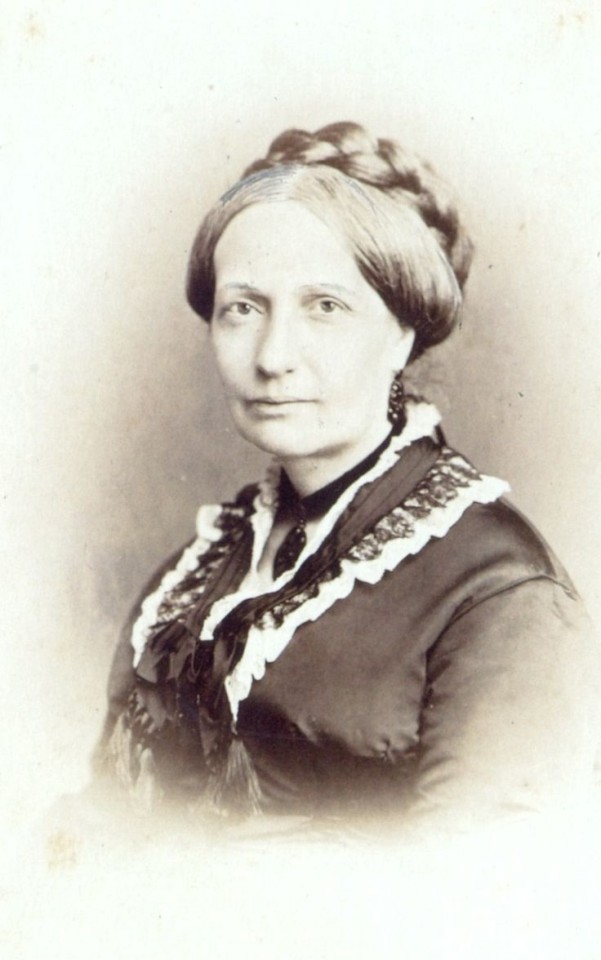
Nasceu em 14 de março de 1822 em Nápoles, foi a nona filha dos doze filhos do rei Francisco I das Duas Sicílias e a rainha Consorte Maria Isabel de Bourbon e recebeu o nome de D. Teresa Cristina de Bourbon-Duas Sicílias.
Ela teve uma educação esmerada e era muito inteligente. Era apaixonada por arqueologia e quando veio ao Brasil, trouxe consigo diversas peças valiosas.
Foi decidido que ela se casaria com D. Pedro II e em 30 de maio de 1843, houve o casamento por procuração em Nápoles, ela partiu da Itália junto da companhia de seu irmão Luís Carlos, Conde de Áquila (Que em 1844 se casou com a irmã de D. Pedro II, a Princesa Januária de Bragança.)
Após uma viagem muito longa, Teresa chegou ao Brasil em 3 de setembro de 1843. Junto com Pedro eles tiveram quatro filhos, o Príncipe D. Afonso que morreu ainda bebê, Princesa Isabel, Princesa Leopoldina e o Príncipe D. Pedro Afonso que também acabou falecendo bebê.
Durante o seu reinado como consorte, ela foi muito amada pela população do Brasil e acabou sendo chamada de "Mãe dos brasileiros". Teresa Cristina também amava o seu novo país e teve um papel importantíssimo na caridade e na imigração italiana e alemã.
Em 15 de novembro de 1889 ocorre o golpe dos republicanos conhecida como proclamação da República e a família Real brasileira foi exilada do país.
Abalada com a situação e triste por deixar o Brasil, Teresa ficou doente e faleceu pouco tempo depois em 28 de dezembro de 1889 em Portugal.
Suas últimas palavras foram "Não morro de doença. Morro de dor e de desgosto. Sinto a ausência das minhas filhas e de meus netos."
0 notes
Photo

dona teresa cristina, 1864, victor meirelles.
teresa cristina de bourbon-duas sicílias [nápoles, 1822 – porto, 1889], cognominada de "mãe dos brasileiros", foi a esposa do imperador dom pedro ii e imperatriz consorte do brasil de 1842 até a proclamação da república, em 1889. nascida como princesa real do reino das duas sicílias, era filha do rei francisco i, pertencente ao ramo italiano da casa de bourbon, e de sua esposa, a infanta maria isabel da espanha.
0 notes
Photo


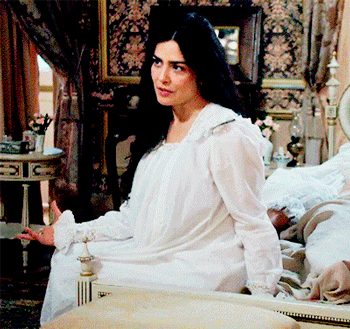
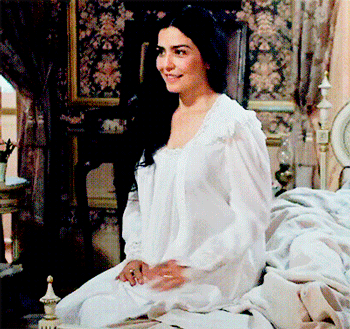
LETICIA SABATELLA as EMPRESS TERESA CRISTINA
NOS TEMPOS DO IMPERADOR (2021)
#perioddramaedit#nos tempos do imperador#teresa cristina of the two sicilies#empress teresa cristina#perioddramacentral#perioddramagif#mine: perioddrama#mine.#leticia sabatella#brazilian history#gifshistorical#historical figures#mine: gifs#rayedit.#teresa cristina of bourbon#novela nos tempos do imperador
153 notes
·
View notes
Photo
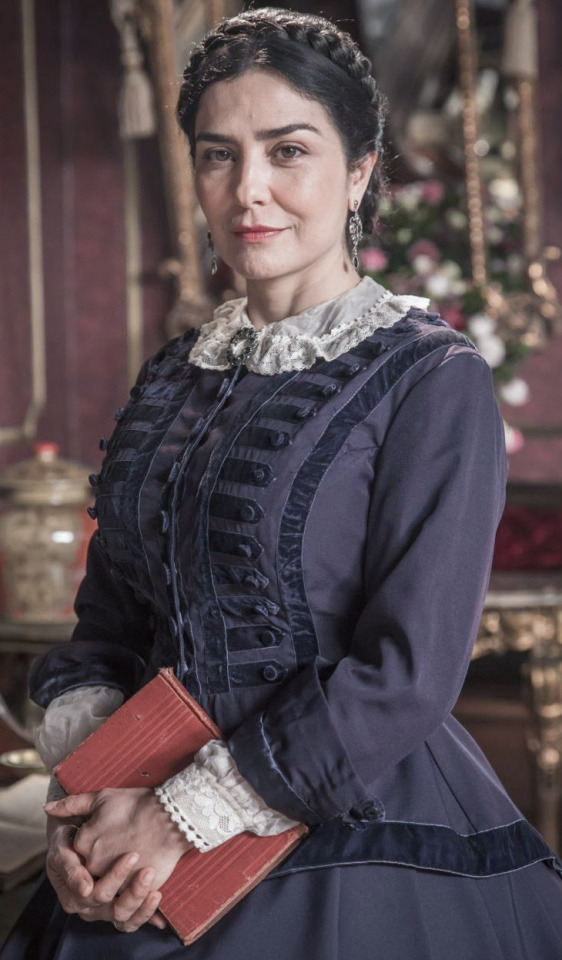
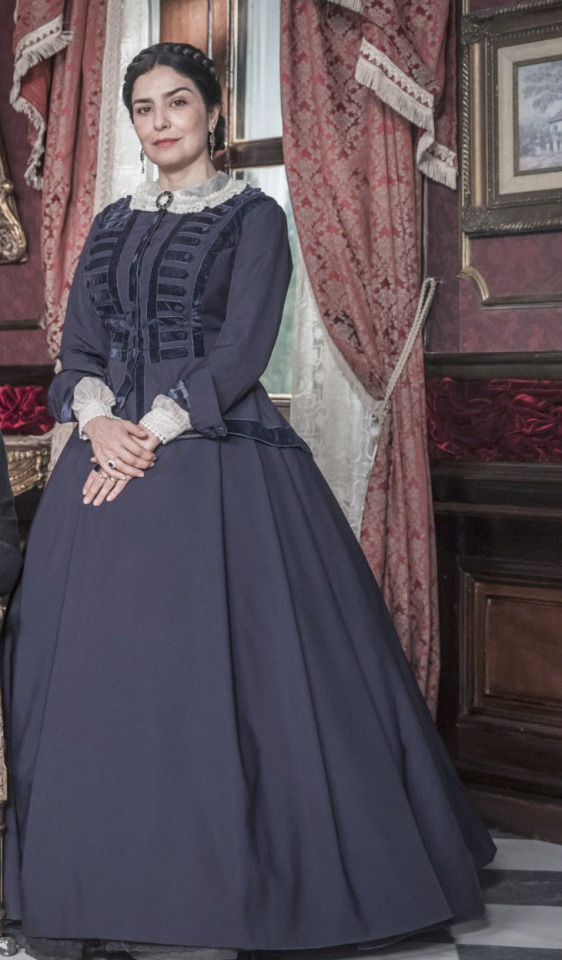
♕ Letícia Sabatella as Teresa Cristina of the Two Sicilies, Empress Consort of Brazil and Princess of the Kingdom of the Two Sicilies in “Nos Tempos do Imperador” (2021), a sequel to “Novo Mundo” (2017).
Empress Teresa Cristina (14 March 1822 – 28 December 1889), nicknamed "the Mother of the Brazilians", was the third and last Empress Consort of Brazil through her marriage to her first cousin once removed Emperor Dom Pedro II of Brazil, who ruled for almost half a century, and also a Princess of the Kingdom of the Two Sicilies. She was the tenth child of King Francis I of the Two Sicilies and Queen consort Maria Isabella of Spain. Teresa Cristina and Dom Pedro II had four children, two of whom survived infancy: Princess Isabel of Brazil and Princess Leopoldina of Brazil. Their marriage never became a passionate one, but they formed a bond based upon family, mutual respect, fondness and companionship. The Empress remained a dutiful spouse and a devoted supporter of the Emperor. Know for her kindness, generosity, discrition and charity Teresa Cristina became beloved and respected by her subjects. She had great interest in archaeology and accumulated her own collection of artifacts. She also sponsored archaeological studies, music, the arts, and the Italian immigration to Brazil. Despite having had no direct political impact on Brazil Teresa Cristina is well regarded for her character, behavior and for her promotion of culture in Brazil. On November 15, 1889 the Brazilian monarchy was overthrown in a military coup d'état. The republic was then instituted in Brazil and the Empress, the Emperor and their family were sent into exile in Europe. Devastated after she was forced to leave her beloved adopted home Empress Teresa Cristina became ill and died in Porto, Portugal a little more than a month after the monarchy's collapse.
#nos tempos do imperador#perioddramaedit#weloveperioddrama#teresa cristina#teresa cristina of the two sicilies#period drama#teresa cristina de bourbon duas sicílias#empress teresa cristina#novelaedit#mine#mine: edit#mine: nos tempos do imperador#mine: teresa cristina#mine: novela#mine: brazilian tv#mine: brasil#novela#brazilian novela#brazilian tv#brazilian stuff#novela brasileira#teresa cristina (ntdi)#imperatriz teresa cristina#thereza cristina#dona teresa cristina#leticia sabatella#ce: 19th century#de: 1850s
104 notes
·
View notes
Text
TERESA CRISTINA & PEDRO II
The Royal Wedding of a Princess of the Two Sicilies and the Emperor of Brazil
(married 1843)

pictured above is a portrait of the Emperor and Empress of Brazil, from 1843
-------------------- ~ -------------------- ~ --------------------
SERIES - On this day September Edition: Teresa Cristina and Pedro were married on 4 September 1843.
-------------------- ~ -------------------- ~ --------------------
TERESA CRISTINA MARIA GIUSEPPA GASPARE BALDASSARRE MELCHIORE GENNARA FRANCESCA DA PAOLA DONATA BONOSA ANDREA D'AVELLINO RITA LUITGARDA GELTRUDA VENANZIA TADDEA SPIRIDIONE ROCCA MATILDE was the youngest daughter of Francesco I, King of the Two Sicilies and his second wife Infanta María Isabel of Spain. She was a member of the HOUSE OF BOURBON-TWO SICILIES and was from her birth in 1822 a PRINCESS OF THE TWO SICILIES.
PEDRO DE ALCÂNTARA JOÃO CARLOS LEOPOLDO SALVADOR BIBIANO FRANCISCO XAVIER DE PAULA LEOCÁDIO MIGUEL GABRIEL RAFAEL GONZAGA was the third son of Pedro I, Emperor of Brazil and his first wife Archduchess Maria Leopoldine of Austria. He was a member of the Brazilian branch of the HOUSE OF BRAGANZA and had been PEDRO II, the EMPEROR OF BRAZIL since his father's abdication in 1831.
When the Emperor was coming of age the Regency Council sought to find a wife for him. And when Ferdinando II, King of the Two Sicilies heard of the news he proposed his sister's hand and a portrait of the Princess was sent to Brazil.
The Council convinced the Emperor to accept the offer and they were married by proxy on 30 May 1843, in Naples, in a ceremony where one of the Princess' older brothers Leopoldo, Count of Syracuse represented the Emperor.

pictured above is a painting of the proxy wedding ceremony of the Princess of the Two Sicilies and the Emperor of Brazil (represented by the Count of Syracuse), by Alessandro Ciccarelli from 1846
After their wedding by proxy the new EMPRESS CONSORT OF BRAZIL sailed to Brazil, arriving at the Imperial capital Rio de Janeiro in September 1843.
On her arrival the Emperor rushed to meet her in her ship but was disappointed with her appearance. Although feeling deceived they were married the next day, on 4 September 1843, in a lavish religious ceremony at the Royal Chapel, in Rio de Janeiro.
They had four children (check the list below), two boys and two girls. However both their sons died young leaving their eldest daughter Princess Isabel as heir to the Imperial throne.
It was certain not a love marriage but they managed to live in good terms, besides the Emperor having had affairs with other women.
In November 1889 a military coup proclaimed the Republic of Brazil and the Monarchy was abolished. Two days later the Imperial Family was forced to flee into exile to Europe, arriving in Portugal by December 1889.
At the time of their arrival, Lisbon was being prepared for the acclamation of Carlos I, the new King of Portugal, a grandnephew of the former Emperor of Brazil, so they left to Oporto.
By the end of December 1889 the Provisional Government of Brazil passed a law banishing all members of the former Imperial Family to ever set foot in Brazil.
This news shattered the former Empress of Brazil, who was already sick, and she died on 28 December 1889.
-------------------- ~ -------------------- ~ --------------------
Following her death the former Emperor moved to Paris and died there in 1891, almost two years later. He never remarried.
-------------------- ~ -------------------- ~ --------------------
Because of the Banishment Law their descendants were not allowed to return to Brazil until 1920, when the law was revoked.
-------------------- ~ -------------------- ~ --------------------
TERESA CRISTINA and PEDRO II had four children...
Afonso, Prince Imperial of Brazil - died aged two;
Isabel, Princess Imperial of Brazil - wife of Gaston, Count of Eu;
Princess Leopoldina of Brazil - wife of Prince Ludwig August of Saxe-Coburg and Gotha; and
Pedro Afonso, Prince Imperial of Brazil - died aged seventeen months.

pictured above is a family portrait of the Brazilian Imperial Family depicting the Emperor and Empress of Brazil with their two surviving children Princess Leopoldina and the Princess Imperial, by François-René Moreaux from 1857
-------------------- ~ -------------------- ~ --------------------
Check my post about TERESA CRISTINA's mother!
Her mother was María Isabel, an Infanta of Spain from her birth in 1789.
#teresa cristina of bourbon two sicilies#princess of the two sicilies#pedro ii#dom pedro ii#emperor pedro ii#emperor of brazil#empire of brazil#house of bourbon two sicilies#bourbon two sicilies#house of braganza#braganza#brazilian imperial family#italian royals#brazilian royals#familia imperial brasileira#royals#royalty#monarchies#monarchy#royal wedding#royal history#italian history#european history#brazilian history#latin american history#world history#history#history lover#19th century#history with laura
25 notes
·
View notes
Photo

Dona Teresa Cristina (14 March 1822 – 28 December 1889), nicknamed "the Mother of the Brazilians", was the Empress consort of Emperor Dom Pedro II of Brazil, who reigned from 1831 to 1889. Born a Princess of the Kingdom of the Two Sicilies in present-day southern Italy, she was the daughter of King Francesco I of the Italian branch of the House of Bourbon and his wife Maria Isabella.
It was long believed by historians that the Princess was raised in an ultra-conservative, intolerant atmosphere which resulted in a timid and unassertive character in public and an ability to be contented with very little materially or emotionally. Recent studies revealed a more complex character, who despite having respected the social norms of the era, was able to assert a limited independence due to her strongly opinionated personality as well as her interest in learning, sciences and culture.
#Teresa Cristina of the Two Sicilies#House Bourbon-Two Sicilies#XIX century#people#portrait#photo#photography#Black and White
2 notes
·
View notes
Photo

Teresa Cristina of the Two Sicilies, Empress of Brazil.
#Teresa Cristina of the Two Sicilies#brazil#empress of brazil#brazilian monarchy#house of bourbon two sicilies#long live the queue
22 notes
·
View notes
Text
Brazilian Days (073): March 14
Brazilian Days (073): March 14
Brazilian Days 073
March 14
.
DAY OF:
Dia Nacional da Poesia
(Brazilian Poetry Day). The World Poetry Day is on 21 March.
Dia do Vendedor de Livros
(Book seller)
Dia dos Carecas
(Bald people)
Dia do Agente Autônomo de Investimentos
(Investment broker)
BRAZILIAN HISTORY:
1847
Birth of Brazilian poet Castro Alves (1847)
1985
Hospitalization of president-elect Tancredo Neves – 12 hours…

View On WordPress
#Castro Alves#Dia do Agente Autônomo de Investimentos#Dia do Vendedor de Livros#Dia dos Carecas#Dia Nacional da Poesia#Divisão Auxiliadora#Dom Pedro II#Fernando Collor#Henrique Lage#Projeto de Reconstrução Nacional#Salvador#Tancredo Neves#Teresa Cristina Maria de Bourbon#Vila Iguaçu
0 notes
Photo

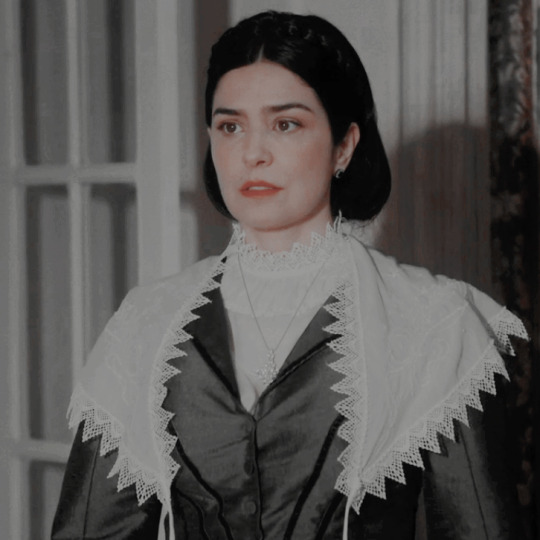
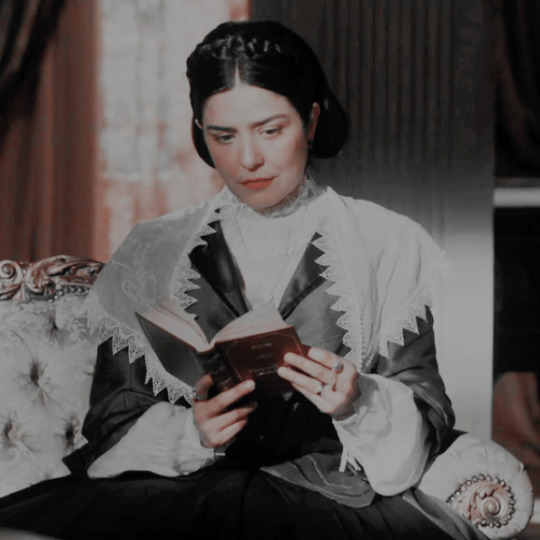
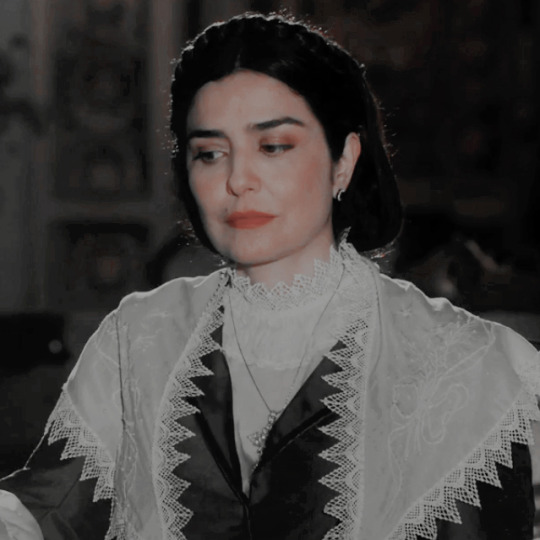

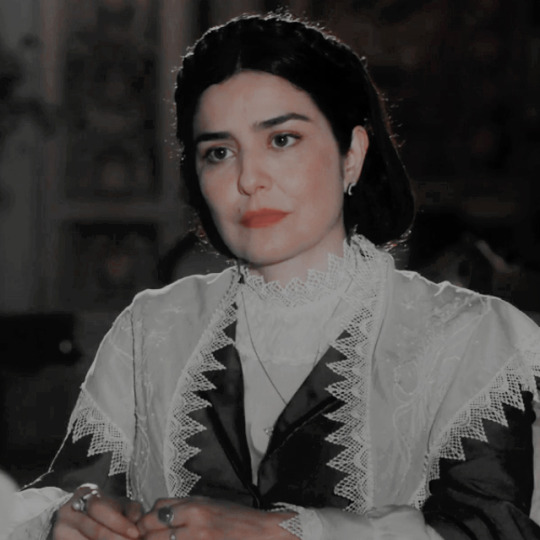
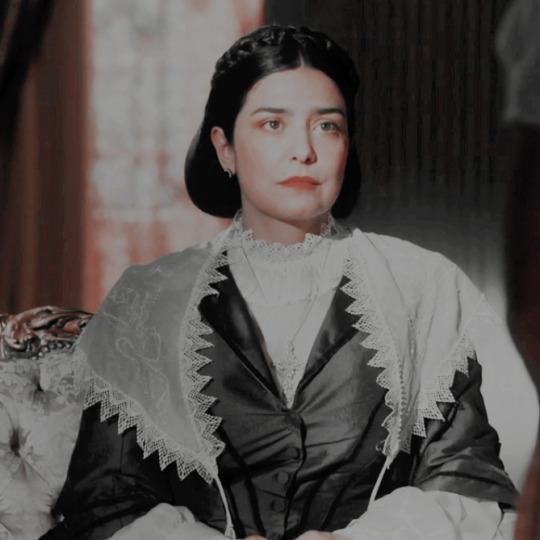

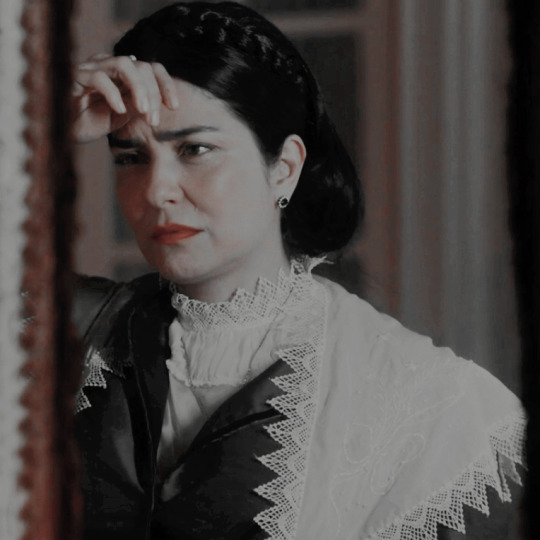
dona teresa cristina icons
leticia sabatella as teresa cristina, the last empress of brazil
Nos Tempos do Imperador (2021) by Rede Globo
Dona Teresa Cristina delle Due Sicilie (14 March 1822 – 28 December 1889), nicknamed "the Mother of the Brazilians", was the Empress consort of Emperor Dom Pedro II of Brazil, who reigned from 1831 to 1889. Born a Princess of the Kingdom of the Two Sicilies in present-day southern Italy, she was the daughter of King Don Francesco I of the Italian branch of the House of Bourbon and his wife Maria Isabella. It was long believed by historians that the Princess was raised in an ultra-conservative, intolerant atmosphere which resulted in a timid and unassertive character in public and an ability to be contented with very little materially or emotionally. Recent studies revealed a more complex character, who despite having respected the social norms of the era, was able to assert a limited independence due to her strongly opinionated personality as well as her interest in learning, sciences and culture. She is a Silenced Empress.
~{ like/reblog if use or credits on twitter @thekingfraser }
~{ don’t repost. }
#nos tempos da imperatriz#teresa cristina#dona teresa#mae dos brasileiros#dona teresa cristina#imperatrice#imperatriz do brasil#leticia sabatella#napoles#imperatriz napolitana#nos tempos do imperador#selton mello#dom pedro ii#pedro ii#thereza christina#Teresa Cristina delle Due Sicilie#the Mother of the Brazilians
22 notes
·
View notes
Photo

Maria Cristina of Bourbon, Queen of Spain (1830). Vincente López y Portaña (Spanish, 1772-1850). Oil on canvas. Museo Nacional del Prado.
This wedding portrait depicts Ferdinand VII’s fourth and final wife, his niece Maria Cristina. The more than half-length likeness shows her at the age of twenty-four in a spectacular blue dress with embroidered silver flowers and bees. Her hairdo a las tres potencias -a curl on each side and a third hanging over the forehead- is adorned with a superb headdress with diamonds in the form of flowers and feathers and real bird-of-paradise feathers, as well as a white lace veil that drapes over her left shoulder. In her hand, she clasps a closed fan that is also set with precious stones. A splendid diamond brooch in the form of a flower basket is pinned to her collar, along with other diamonds, earrings and a magnificent belt around her waist. A sash of the Order of María Luisa crosses her bosom and the scallop of the Order of the Eagle and the Star of Isabel Teresa of Austria are affixed to her left shoulder. Painted for her husband and uncle, this nuptial likeness is undoubtedly the most sumptuous of any portrait by Vicente López as well as an eloquent expression of the ostentatious character of this young queen, who was passionate about jewels and other luxurious and eye-catching adornments on her clothing and accessories. It is also a superb example of this Valencian master’s astonishing virtuosity and exceptional technical gifts, which he maintained through his final years
137 notes
·
View notes